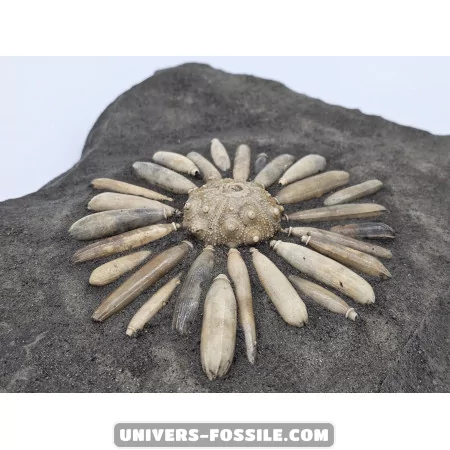Sea Urchin Pseudocidaris mammosa - Fossil Importance and Evolutionary Significance

Sea Urchin Pseudocidaris mammosa
The fossilized sea urchin Pseudocidaris mammosa is an extinct species that offers a fascinating glimpse into the ancient marine world. This medium-sized sea urchin stood out with its globular body adorned with nipple-shaped tubercles, setting it apart from its contemporaries.
Pseudocidaris mammosa was a distinctive sea urchin species known for its unique features. Its shell was covered in spines, with nipple-shaped tubercles in a regular pattern, explaining its specific name "mammosa". The arrangement of these tubercles gave this sea urchin a one-of-a-kind appearance, making it a valuable addition to any fossil collection.
Habitat and Distribution:
Fossils of Pseudocidaris mammosa have been uncovered in various regions globally, indicating its widespread distribution in ancient seas. These sea urchins likely thrived in shallow marine environments, possibly dwelling on rocky or sandy seabeds where food sources were abundant.
Lifestyle:
Believed to have been herbivores, Pseudocidaris mammosa likely fed on algae and organic matter on the sea floor. Its spines and tubercles provided defense against predators and aided in movement through the marine environment. Studying the lifestyle of this extinct sea urchin sheds light on the ecology of ancient marine ecosystems.
About Sea Urchin Pseudocidaris mammosa
Sea Urchin Pseudocidaris mammosa is a species that once roamed the ancient seas, leaving behind a remarkable legacy in the form of fossilized remains. These fossils have played a crucial role in shaping our understanding of the evolutionary history of marine organisms.
Fossil Importance
Fossils of Pseudocidaris mammosa have been of great importance to paleontologists and geologists in their study of the evolution of marine organisms. By examining the anatomical features of these fossils and comparing them to other species of sea urchins, scientists have been able to gain a better understanding of the evolutionary relationships between different families of sea urchins and their adaptation to different marine environments over geological time.
Conclusion
Pseudocidaris mammosa is a fascinating example of an extinct species of sea urchin that has contributed to our understanding of the evolution of marine life. Its distinctive features and geographical distribution make it a valuable subject of study for scientists interested in the history of life on Earth.
By examining fossils of Pseudocidaris mammosa and other ancient species, we can learn more about the evolutionary processes that have shaped the marine biodiversity we know today.
